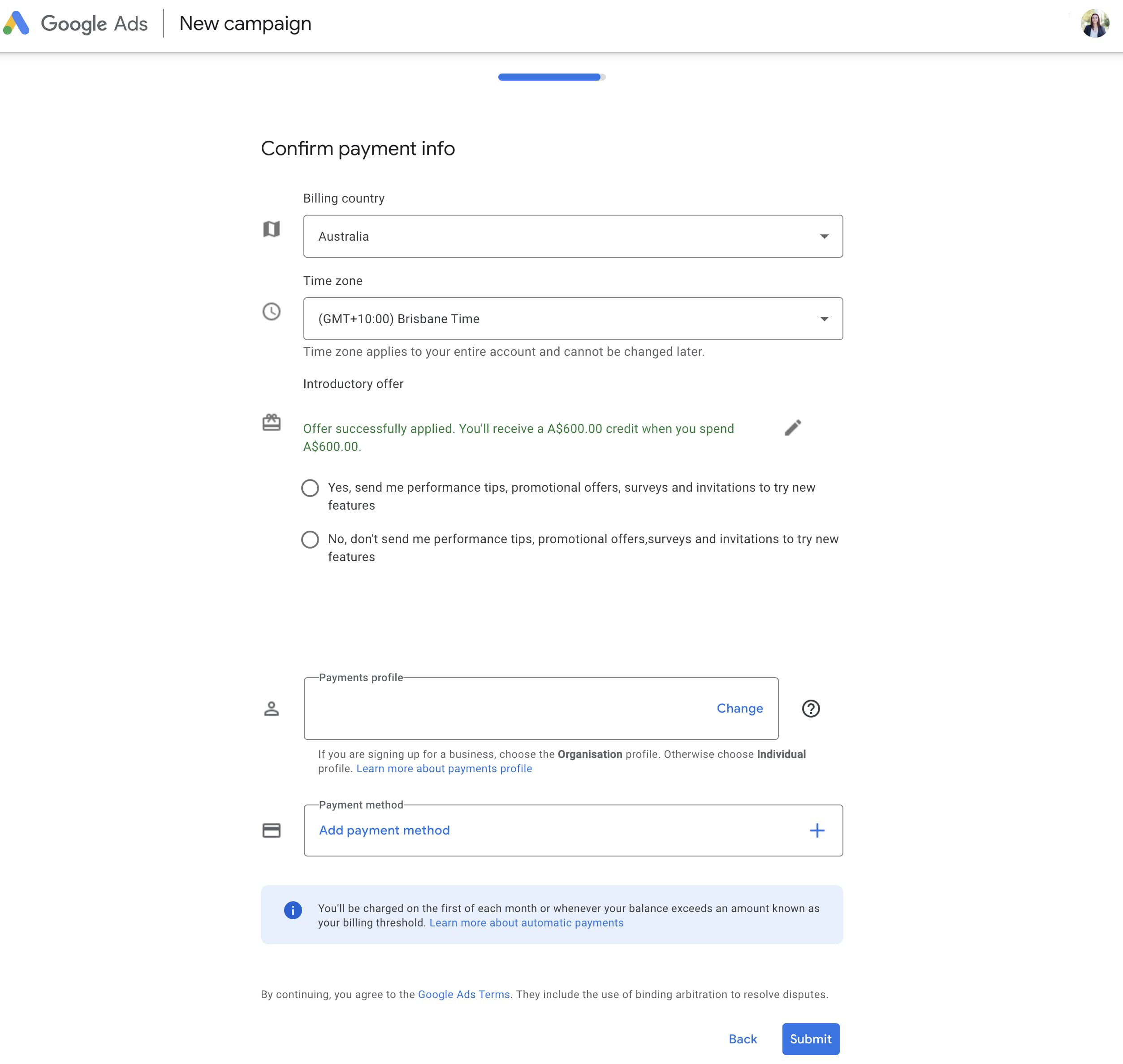The marketing world has changed drastically since COVID-19 and Google Ads is a platform involved in this transformation. Google Ads are incredibly effective when it comes to reaching many of your marketing goals, it can get you sales, drive traffic, and help you increase your brand awareness.
In this article, we will be talking about what you need to know about Google Ads and how to create a Google Ad.
What is Google Ads?
Google Ads is Google's online advertising program, allowing you to create online ads to reach the people who are interested in your products and services. Google ads can be used to promote your business, help sell products or services, raise awareness, and increase traffic to your website.
How Does Google Ads Work?
Google Ads display your ad to potential leads or customers who are interested in your product or service. Advertisers bid on search terms or keywords and the winners of the bid are placed at the top of the search results page.
There are many factors that impact your ability to create high-performing Google ads, here are 7 factors:
AdRank and Quality Score
AdRank is a value that's used to determine your ad position on a page relative to other ads and whether your ads will show at all. Your AdRank is determined using your bid amount, your auction-time ad quality (including expected Click-Through Rate (CTR), ad relevance, and landing page experience), the ad rank thresholds, the competitiveness of an auction, the context of the person search (location, device, time of search, nature of search terms), and the expected impact of assets and other ad formats.
Your Click-Through Rate (CTR) depends on how well your ad matches the searcher's intent, which can be due to three areas:
- The relevance of your keywords
- If your ad copy and call to action deliver what the searcher is expecting.
- The user experience of your landing page
Quality score is a diagnostic tool to give you a sense of how well your ad quality compares to other advertisers, this can be used to identify where it might be beneficial to improve your ads, landing pages or keyword selection.
Location
When you first set up your Google Ads account, you will select either a geographical area where your ad will be shown. You want this to be shown around the area of your clinic's physical address. Your location plays a huge role in your ad placement, if your clinic is in Brisbane and someone in Sydney searches "Beauty clinic", your ad won't show for them as Google's main objective is to display ads to searchers that are relevant to them.
Keywords
Keyword research is extremely important for paid ads and organic search. You need to choose keywords that are relevant to your business and match your searcher's intent as much as possible, Google will match your ad with search queries based on your selected keywords. Each Ad group you create within your campaign should target separate keywords.
Match Types
Match types are keywords or phrases that are used to match ads with the terms people are searching for. The keyword match types dictate how closely the keywords need to match with the user's search query so the ad can be considered for auction.
- Broad Match - Broad match may show ads based on searches that are related to your keyword, which include searches that don't contain the keyword terms. For example, your broad match keyword may be "beauty clinic brisbane" you may also match for "brisbane beauty clinic" or "beauty brisbane."
- Phrase Match - Phrase match ads may show on searches that include the meaning of your keyword, the meaning of the keyword can be implied and user searches can be a more specific form of the meaning. For example, your phrase match keyword may be "beauty clinic brisbane" you may also match for "beauty clinics in brisbane cbd" or "waxing beauty clinic in brisbane."
- Exact Match - Exact Match ads may show on searches that have the exact same meaning or same intent as the keyword. For example, your exact match keyword may be "beauty clinic brisbane" you may also match for "beauty brisbane" or "clinic brisbane."
Headline and Description
Ad copy is the difference between a click on your ad and a click on your competitor's ad. It's so important that your headline and description match the searcher's intent and target the most relevant keywords.
Ad Extensions
Ad extensions are great for your Google Ads for two reasons: one, they're free and two, they give searchers additional information and another reason to interact with your ad.
- Sitelink Extensions - Sitelinks take people to specific pages on your site, for example, a specific product or about your company.
- Call Extensions - You can show your phone number with your ads by using call extensions, people can tap or click a button to call your business directly or go to your website.
- Location Extensions - Your ads can display information, like your address and a map of your location or the distance to your business, so your clients can find your clinic.
- Offer Extensions - This extension can add more value to your search network text ads by highlighting your sales and promotions for people searching for the best deals.
- App Extensions - App extensions allow you to link your mobile or tablet app from your text ads.
Google Ads Retargeting
Retargeting ads allow your business to show targeted ads to users who have visited your website but didn't convert - purchase an item, book a service or contact you.
Why Advertise on Google?
Digital advertising allows you to show your ads to the people who are likely to be interested in your products and services and filter out the people who aren't. Google ads gives you full control over how you spend your money, with no minimum amount you can choose how much your clinic would like to spend per month, per day, and per ad.
Google Ads allows clinics to focus on the people who are searching specifically for what they want, it helps increase leads and customers.
How Often Should I Optimise my Google Ads Account?
Optimisation isn't a case of a one-off task but rather a process of trial and error to see what is working and what needs to change. Each time you optimise your Google Ads campaigns, you need to wait for enough data to determine how to change the impacted campaign, this process can take anywhere between 4-8 weeks. This process should never be rushed and for truly effective campaigns, optimisation may take longer.
Google Ad Terms to Know
There are many terms for different things which can get confusing, these common terms will hekp you to set up, manage and optimise your ads.
AdRank
Your Ad Rank determines your ad placement. Ad Rank is a value used to determine where ads are shown on a page that is relative to the other ads or if they are shown at all. Your Ad Rank is determined by your maximum bid multiplied by your Quality Score.
Bidding
You can bud for your ads in many different ways, depending on what matters most to your clinic (clicks, impressions, conversions, or views).
- Clicks - If your main goal is to send people to your website, then clicks are a great place to start. Using cost-per-click (CPC) bidding, you only pay when someone clicks on your ad and views your website.
- Impressions - If your main goal is to increase your brand awareness then use target impression share. Using target impression share means you pay by the number of times your ad is visibly shown.
- Conversions - With this advanced bidding method, a conversion is a particular action you want to happen on your website. Using this bidding method, you pay for each engaged view and click on display ads.
- Views - If your main goal is to receive viewers for your video content. You'll pay for video views nad other video interactions, such as clicks.
Campaign Type
- Search Campaigns - These campaigns are text ads on search results that let you reach people when they are searching for products and services you offer. Search campaigns can boost your sales and leads, they have highly specific targeting and are super easy to set up.
- Display Campaigns - Display campaigns let you reach a relevant audience with visually engaging ads when they browse millions of websites, apps, and google-owned properties, much like youtube. Display campaigns can boost your sales and increase leads while also increasing your reach and brand awareness.
- Video Campaigns - Video campaigns are ads that are shown on youtube and other websites, video campaigns can help boost general awareness of your brand.
- Shopping Campaigns - This campaign is product listings that are ideal for retailers looking to sell your product inventory. Shopping campaigns can help boost your retail marketing and help to increase your sales.
- App Campaigns - App Campaigns help you find new app users and increase sales within your app. This campaign helps app promotion and is great for multi-channel marketing.
- Local Campaigns - Local campaigns help you bring people to your physical clinic, this campaign helps to increase your in-person sales.
- Smart Campaigns - Smart campaigns are when Google finds the best targeting to get you the most bang for your buck.
- Performance Max Campaigns - This campaign is a goal-based campaign type that allows performance advertisers to access all of Google Ads inventory from a single campaign.
Click-Through Rate (CTR)
Your click-through rate or (CTR) is a ratio of how often people see your ad or product and end up clicking through, this is a gauge of how well your keywords and ads are performing. clicks divided by impressions = CTR, for example, if you had 5 clicks and 100 impressions then your CTR is 5%.
Conversion Rate (CVR)
Your conversion rate is the number of conversions per ad interaction which is shown as a percentage. Your conversion rate is calculated by taking the number of conversions and dividing it by the interactions, for example, if you had 5 conversions and 100 interactions, your conversion rate would be 5%.
Display Network
Your Google Ad can be shown on search results pages or a page on Googles Display Network (GDN). The Google Display Network helps you find the right audience with its targeting options, it is a network of websites that allow space on their pages for ads, which can be both text and image.
Extensions
Ad Extensions help to improve your ad quality and automatically improve your Ad Rank because Google favors extensions as they can offer a better variety of ad formats for searchers.
Keywords
Keywords are words or phrases describing your products and services that is chosen to help determine when and where your ad can appear, keywords help your ad to be shown to the right people at the right time.
PPC
PPC or Pay Per Click is a type of advertising where the advertisers pay per click on their ad. PPC is covered on a multitude of different ad platforms however Google Ads is the most common platform.
Quality Score (QS)
Quality Score is a tool used by Google to determine how well your ad quality compares to your competitors. This score is measured on a scale of 1 to 10, the higher the Quality Score the better your ad and landing page are.
How to Create a Google Ads
1. Set up Your Google Ads Account
Go to the Google Ads homepage and click "Get Started" in the right-hand corner. You can sign in with your google account to create a new one.

2. Choose Your Business Name & Website
Once you have signed in, you will be directed to the below page to provide your business name and website. The URL you provide is where anyone who clicks your ad will be taken.
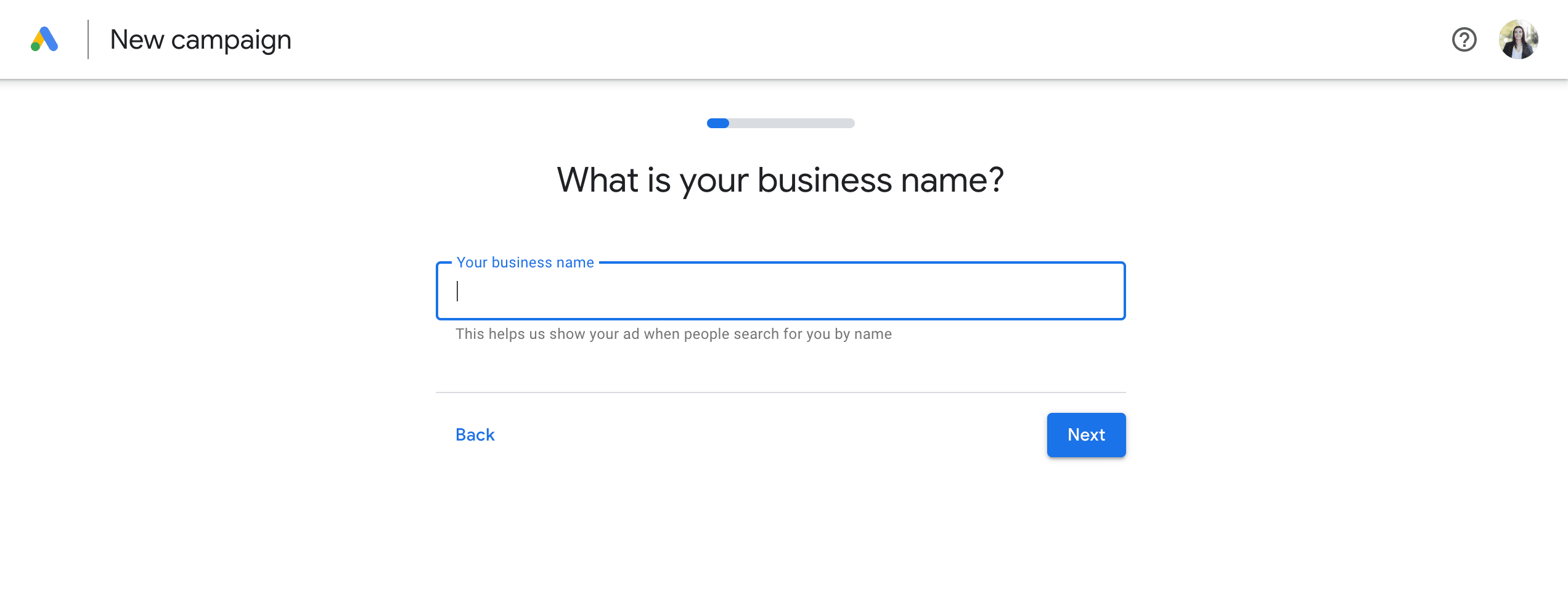

3. Select Your Advertising Goal
Select your clinic's main advertising goal. You can choose between: get more calls, get more website sales or sign-ups, get more visits to your physical location or get more views and engagement on YouTube.
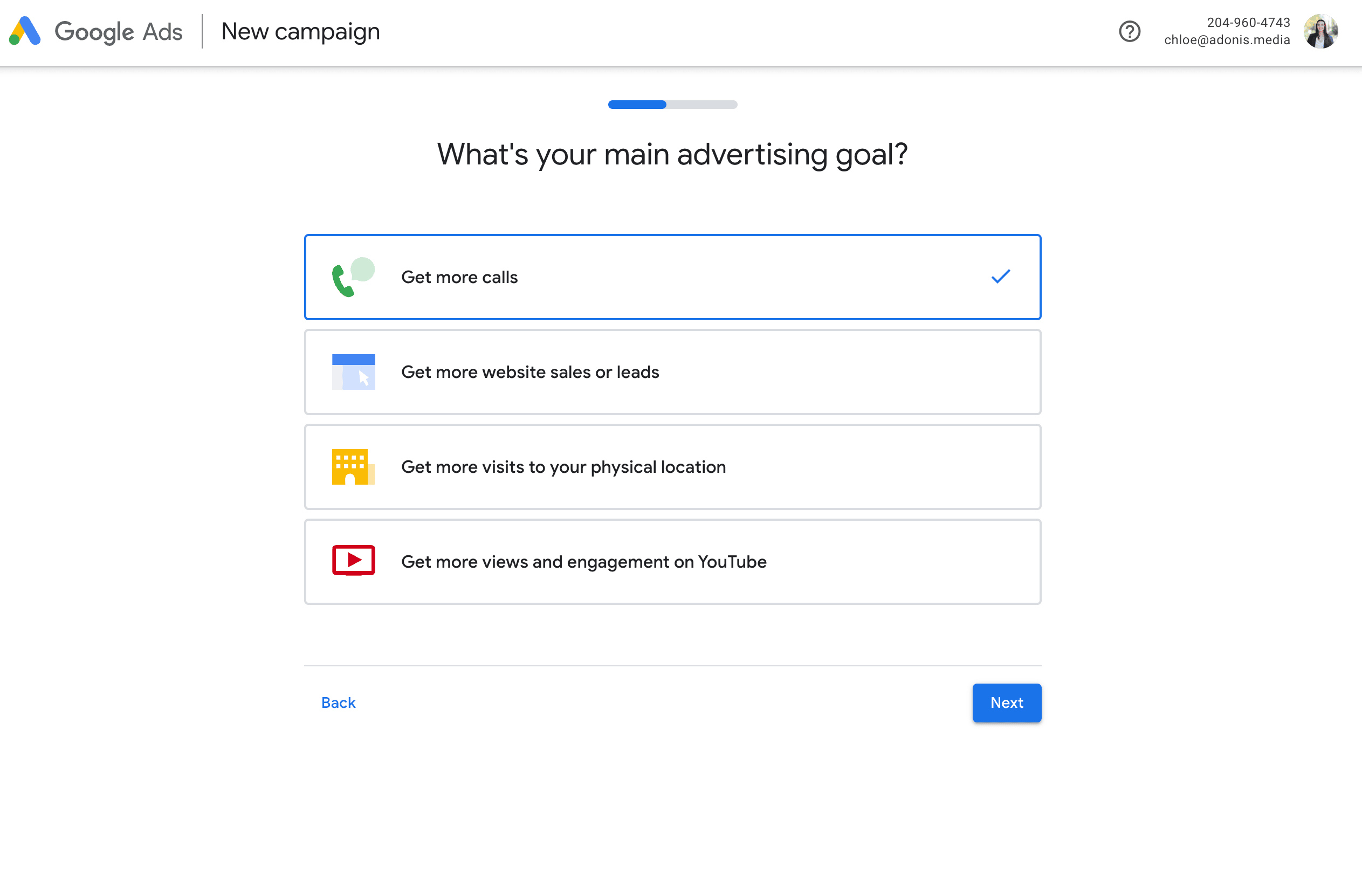
4. Create Your Ad
Now create your ad, this requires creativity and can sometimes be challenging. Google gives you recommendations based on your website, however, it is very important to write an ad that will attract and convert your audience.
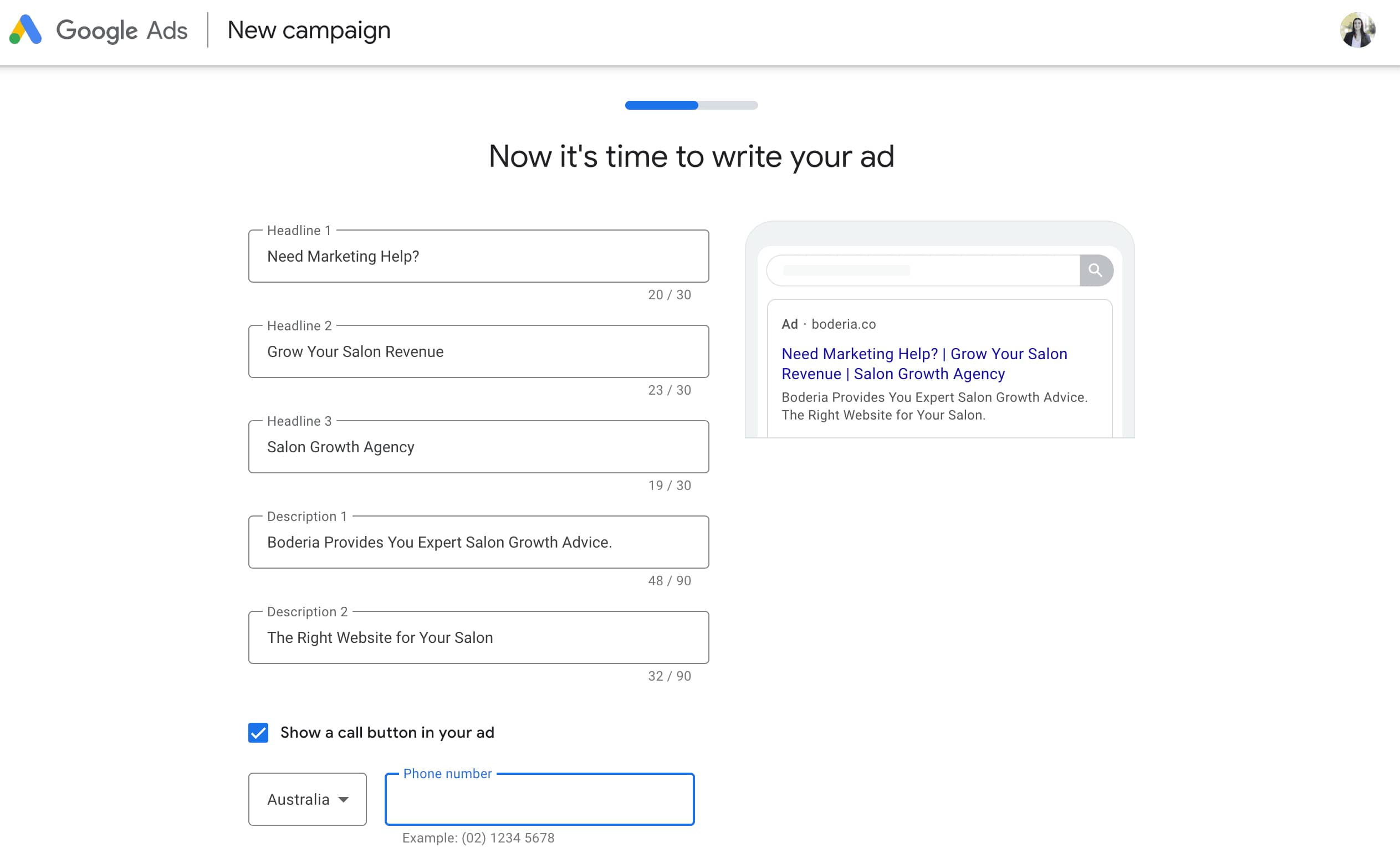
5. Add Keyword Themes
Now you can add keywords that match your brand, you may have a few suggested keywords however you can choose your own if you have done your keyword research.
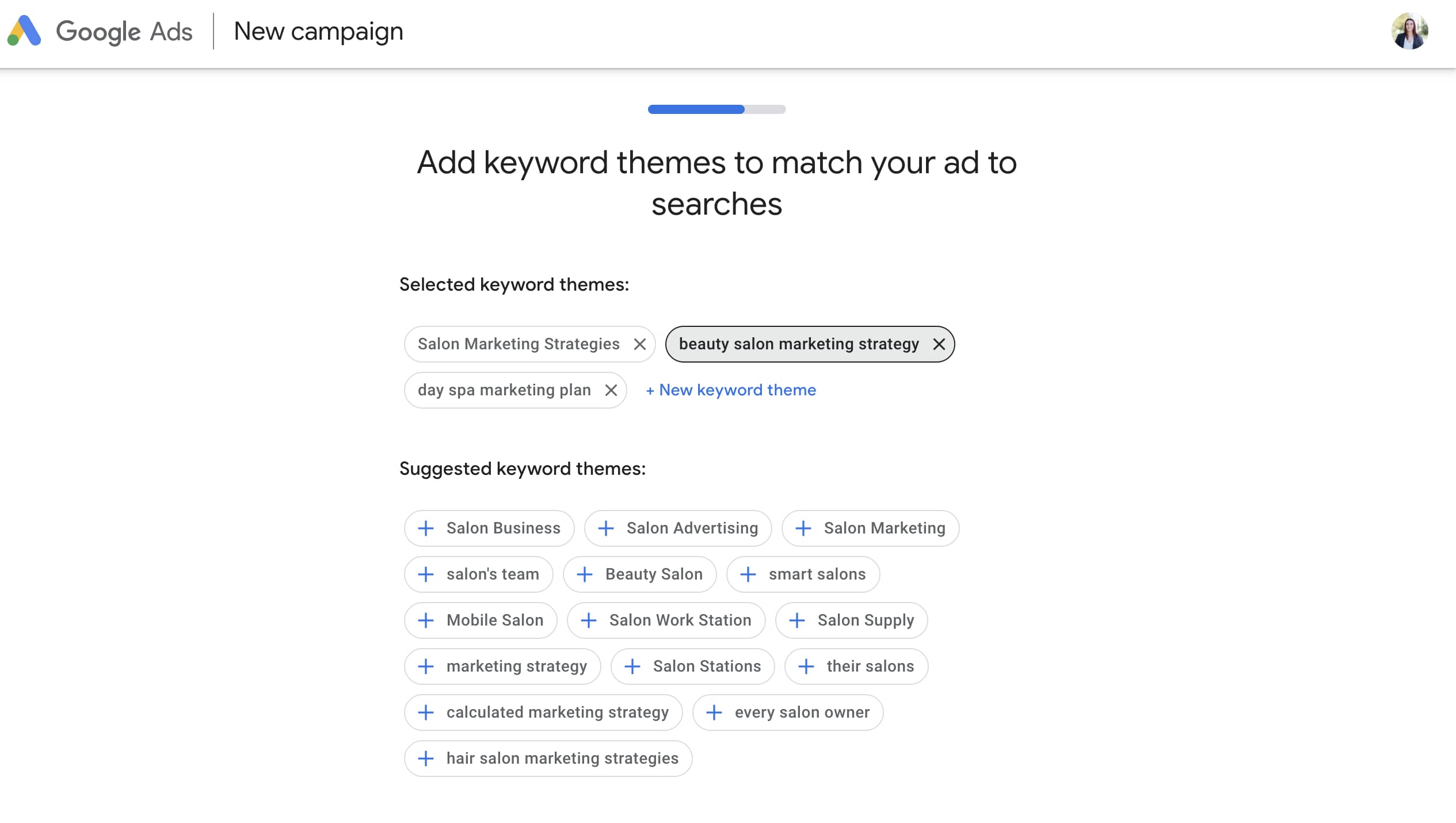
6. Set Your Ad Location
You can now choose the lcoation/s where you want your ad to appear, this can be a physical address or an area.
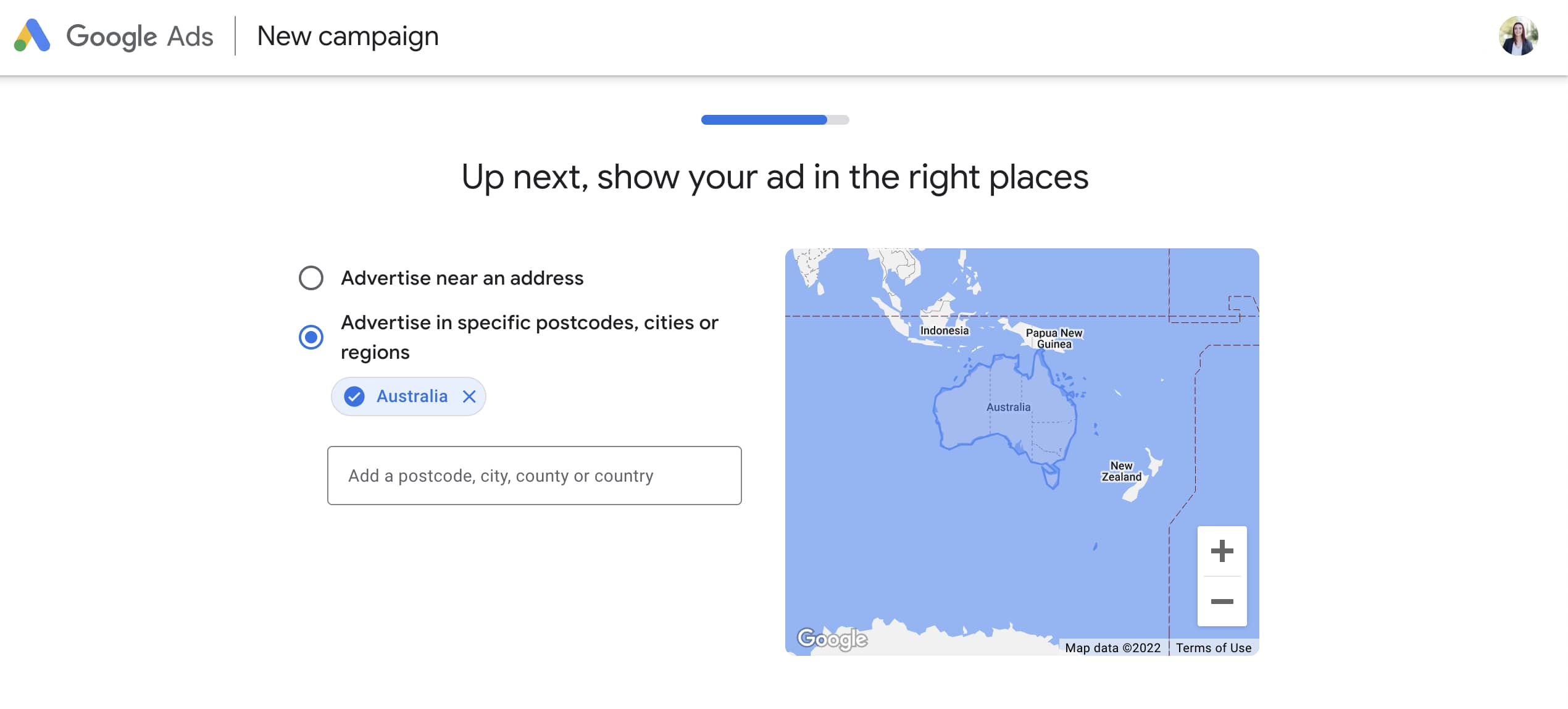
7. Set Your Budget
Here you can set the budget you wish to spend daily, you will be given options from Google or you can enter a specific budget.
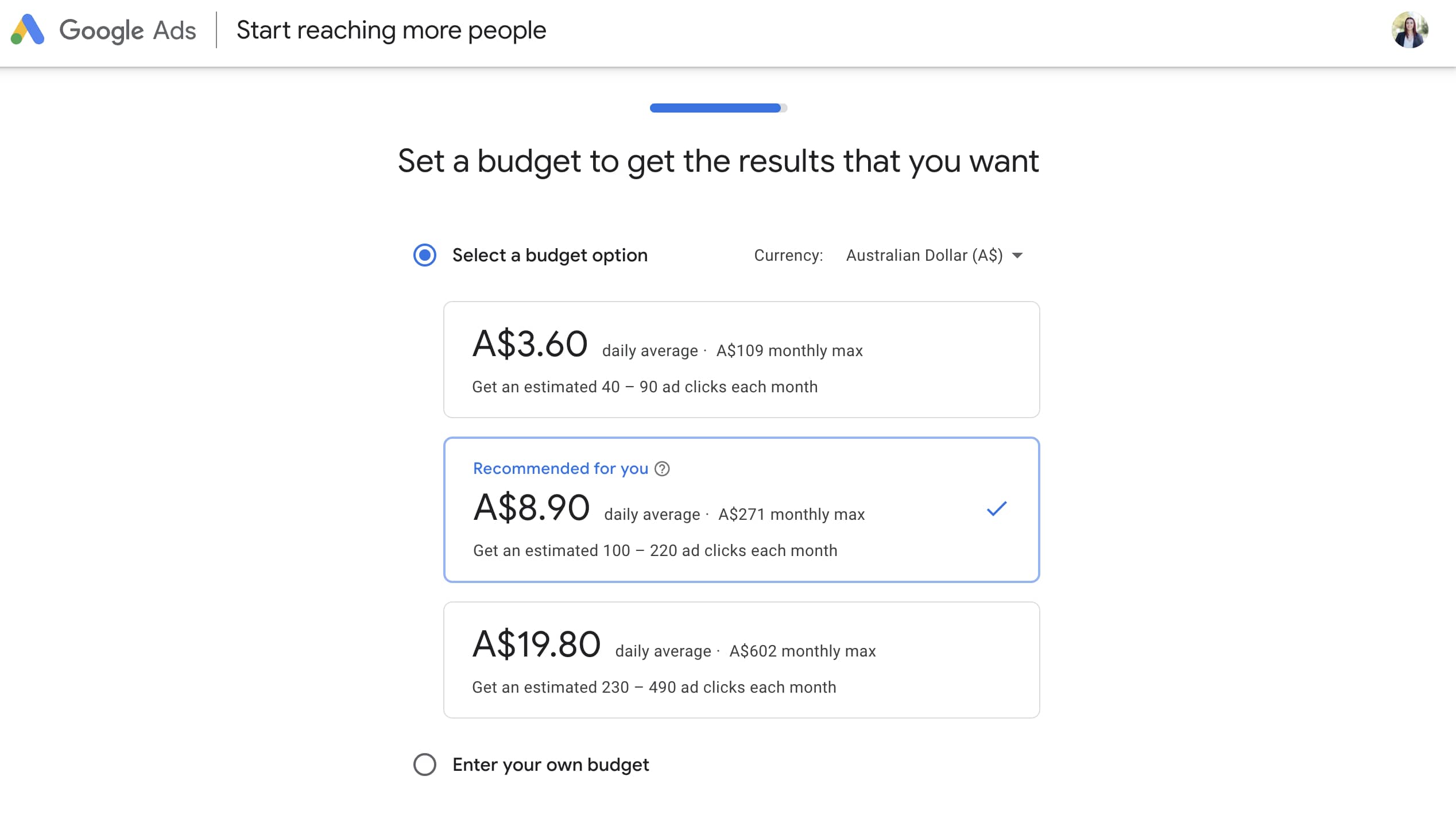
8. Confirm Payment
Lastly, provide your billing information and you have successfully created your first Google Ad.

